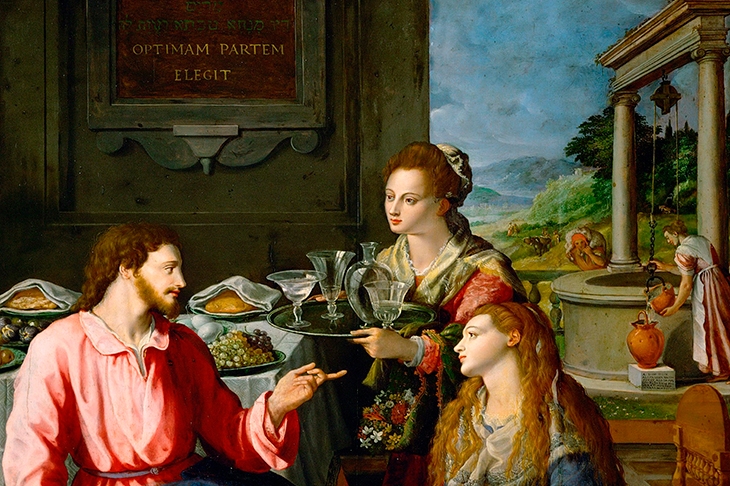The gnostic Gospel of Mary has long been the subject of controversy, even as to which of the several Marys who feature in Jesus’s life was its author. It is generally assumed to have been Mary Magdalene, not least because it depicts her regular adversary, St Peter, refusing to credit a woman’s testimony.
In Names of the Women, Jeet Thayil challenges Peter, along with 2,000 years of church tradition, by placing Mary Magdalene and 14 other women at the very heart of the gospel story. His intention to retell pivotal incidents from a female perspective is evident from the opening words ‘Mary, write,’ which are repeated in various forms throughout the book.
The women’s stories are related in short, discrete chapters and clear, almost clinical prose. Those of the Virgin Mary and the Magdalene herself are the most familiar, although approached from an unusual angle. The Virgin is depicted as a young girl, consecrated to the Temple before being won in a marriage lottery by Joseph. The Magdalene is not the conventional penitent prostitute (for which there is no biblical foundation) but, rather, a well-to-do woman whom Jesus cures of depression.
Some of the women, such as Herodias and Salome, outvying each other in barbarism, and Martha and Mary, fulfilling their proverbial roles, have long outgrown their biblical origins. Of particular interest are the women whose stories Thayil fleshes out from the merest hints in the gospel narratives: Aquila and Bilhah, two of the high priest’s servants, who witness Peter’s denial of Christ; and Junia, the widow who places her mite in the Temple treasury.
With Mary Magdalene restored to respectability, there’s a vacancy for the role of the fallen woman, which Thayil allots to Ariamma, a Canaanite brought to Galilee by her Jewish husband and reduced to prostitution when he falls ill.








Comments
Join the debate for just £1 a month
Be part of the conversation with other Spectator readers by getting your first three months for £3.
UNLOCK ACCESS Just £1 a monthAlready a subscriber? Log in